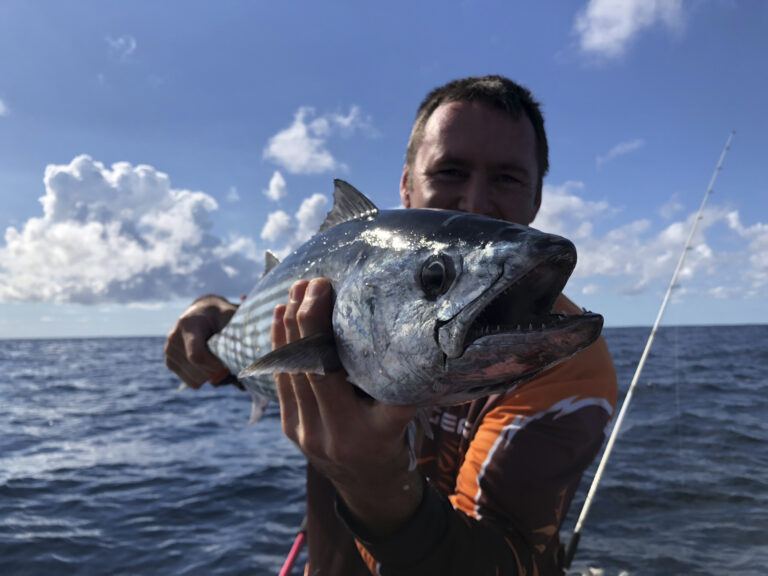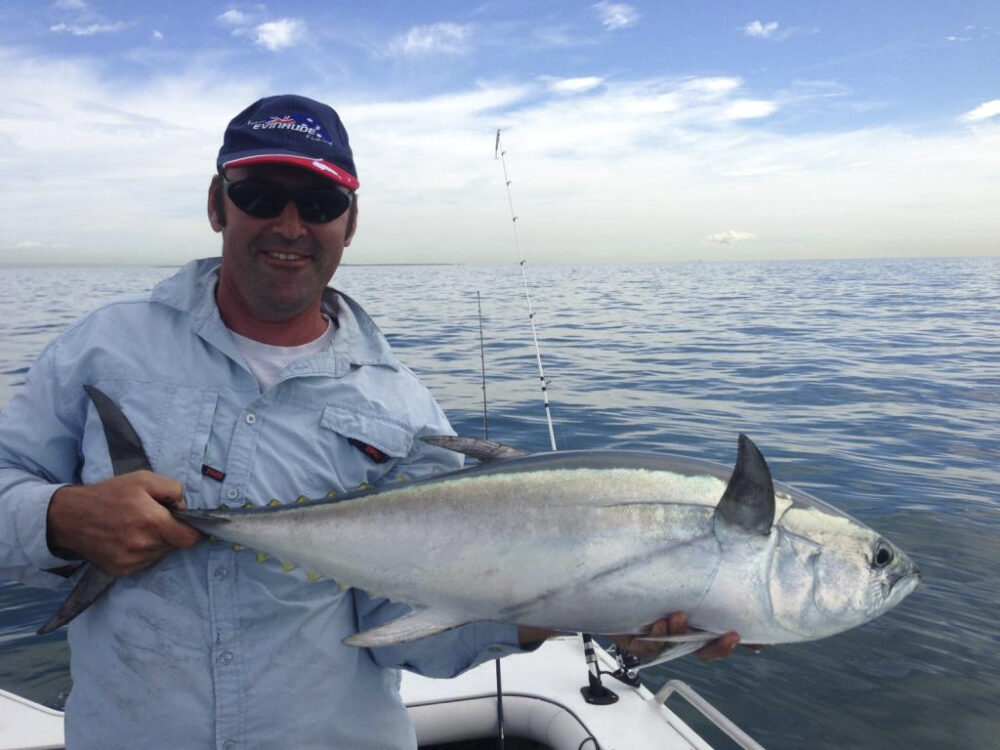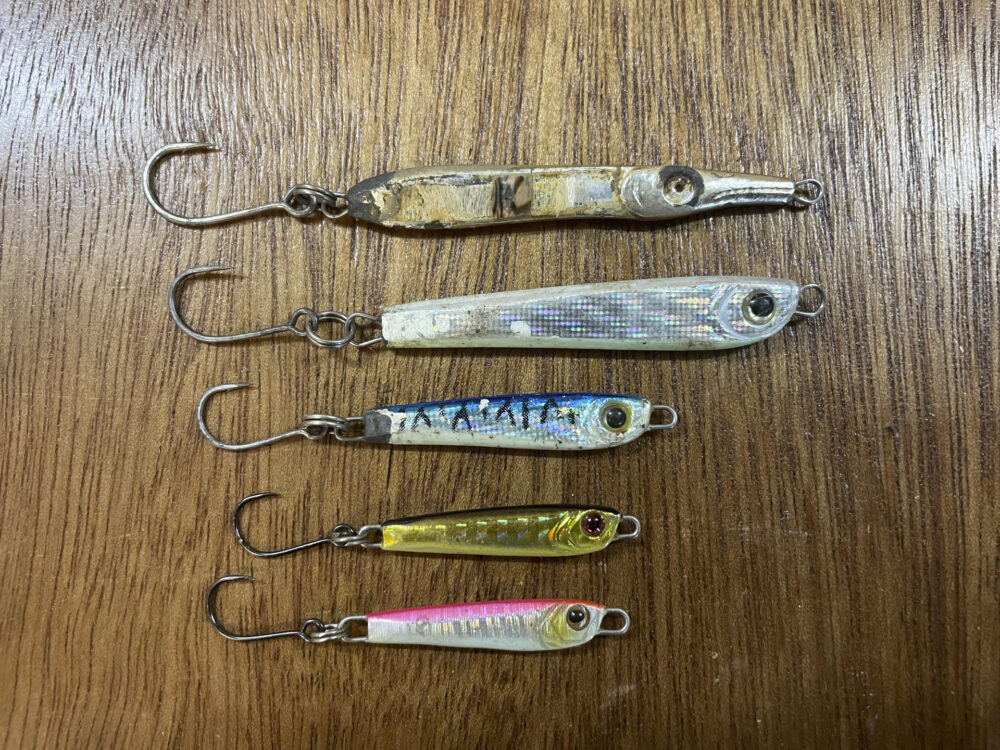Longtail ‘The need for speed’ – By Gyula Vari
It’s that exciting time of the year again when we start to transition from targeting bottom dwellers to pelagic speedsters.
For those of us that target and follow the seasons, we are hanging up the reef rods over the warmer months and readying the game gear.
All along the east coast, as the warm currents start to push down and closer to the mainland, the pelagic fishing will start to fire up. These currents will bring along with them tunas, mackerels, trevallies, dolphin fish (Mahi Mahi), wahoo and marlin.
At the time of writing this, the school mackerel were already in Moreton Bay, which is a good sign we could be in for a great season. For those, like myself, who like to target mackerel, the school mackerel also referred to as ‘schoolies’ will be followed by the spotted mackerel then the Spanish mackerel mixed in with my favourite, the longtail tuna.
This style of fishing is not solely restricted to the boaties only. There are plenty of great land-based options and locations, so if you don’t own a boat, don’t despair. In my younger years, I used to do a lot of rock-fishing from headlands and frequently targeted Spanish mackerel and longtail tuna with great success. The key was to either cast lures, so a long-distance casting set up is a must, or float live baits out under floats if the wind conditions were right. There is also the prospect of drone fishing these days, which admittedly I know nothing about, but looks very interesting and from what I have seen, makes land-based fishing look much easier. If only I had access to this twenty or thirty years ago.
Now, if you do own a boat, the options are endless. Even with smaller trailer vessels, you can tangle with marlin, a lot of small boat owners discount the prospect of catching marlin as they associate marlin fishing with having to travel out to the shelf or beyond.
If the conditions are right and the warm currents come in close enough to the mainland, and the food source (bait schools) are around, the fish will follow.
One of my best black marlin fishing trips was only six kilometres from shore and in only fifteen to twenty metres of water depth in front of Stradbroke Island.
We landed thirteen juvenile black marlin ranging between fifteen and fifty kilograms, whilst not trophy sized fish, they were great fun on light tackle and all caught fishing from a five meter tinny!
The adrenalin of hooking and landing these speedsters is difficult to describe in words, most reading this will know what I mean, for me there is one species that tops the list for their blistering runs and fight, the longtail tuna. I will share some of my insights and why I put this fish as my number one on my target list!
The longtail tuna also known as the northern bluefin tuna (Thunnus tonggol) is much smaller compared to the southern bluefin or Atlantic bluefin, only growing to a maximum size of 35kgs or so. It is slenderer in build giving it more speed and manoeuvrability pound for pound over its cousins.
They can be extremely difficult to entice making more of a challenge and hooking one is half the battle. Once they are hooked, the only thing that is predictable with a longtail is its first blistering run, after this, it’s anyone’s guess. These fish will use every trick in the book, they may fight deep, on the surface, come toward you, throw in a few more blistering runs but most commonly, a combination of all of these. You really have to be on you’re a-game!
Let’s have a closer look at enticing the fish. Firstly, good quality tackle is required, I think I say this for every article I write but take note if you are going to target longtail. The reel needs to have a super smooth drag, that maintains smoothness and pressure as the drag gets hot, cheaper reels will lose the drag smoothness once they heat up, and this will most certainly happen! This can also lead to lost fish. Your outfit needs the ability to be able cast long distances, the further distance you can maintain between the boat and the fish, the more chance you will have.
Longtail are very easily distracted and spooked, they will remain on the surface to feed in short bursts at the best of times, so an approaching boat can see them disappear as fast as they appear.
Generally, if you are targeting and looking for longtail tuna, you will come across other tuna species like mack tuna, school and spotted mackerel. It’s important to be able to determine and distinguish between the different species from their feeding patterns and patterns on the waters surface. They are all different and longtail have a very distinct pattern. Over the years I have seen many boats race over to a school of fish, busting up feeding on the surface whilst targeting longtail, to find they are casting into a school of mack tuna. You need to be patient and wait for the right signs which will lead you to the species you are after. Some signs of a longtail bust up are explosions on the water’s surface, there may be thirty fish feeding but you may only see two or three fish hitting the bait fish on the surface, they will take turns picking of the baitfish. On some occasions, it may be one fish at a time feeding, so they can be a bit harder to spot glancing across the horizon. If you see what looks like an acre of whitewash and surface action, it will most likely be mack tuna. Only on two occasions I have witnessed acres of longtail tuna in a feeding frenzy, as far as the eye could see, it was during our El Nino over ten odd years ago.
Another sign of longtail feeding is seeing the fish completely rocket out of the water like a torpedo! This is something you will easily confirm as a longtail tuna, it is undeniable!
Resist the urge to race in the direction of the feeding fish at speed, be patient, take your time, proceed cautiously and observe their pattern during your approach.
If you have managed to get into casting range of the fish, be mindful where you are going to place that lure. Longtail move very quickly, so hopefully during your approach and having observed their movement, you can make a successful cast. A successful cast should see the lure in front of the fish, not behind them. Anticipation plays a big role here also, as the fish can change direction randomly and very quickly.
Assuming so far, everything has gone according to plan, and you have placed the lure in front of feeding and active longtail, the next consideration is the lure, is it the right one? Longtail can be extremely fussy eaters and are not easily fooled by just any offering, the age-old fishing saying ‘match the hatch’ rings very true in this case. You may only get a couple of casts in before the fish move on, so no hook up means the size, colour or style of lure may be wrong. I generally target longtail with thirty to seventy gram ‘slug’ type lures, to resemble white bait or small pilchards, and will always run a single hook, replacing the standard treble hook that these lures come standard with. Single hooks are more effective,they are stronger with a wider gape, resulting in almost a one hundred percent hook up rate if the fish strikes.
One technique I have found that has worked for me over the years, is to wind that lure as fast as physically possible, keep your rod tip low so the lure stays in the water. Briefly touching on the reel again, make sure it has a high gear ratio, six to one or more is good.
My theory here is the fish have less time to compute that the lure doesn’t exactly resemble what the longtail are feeding on, and in effect, confuses them drawing an instinctive strike.
This theory has worked, and I am sticking by it, as over the years, the faster wind rate has resulted in more strikes and hook ups for me.
Now that you have hooked up and connected with a fish, the fun really begins. The first run is huge! You will see the line disappear from your reel at a rapid rate of knots, again, be patient and try not to adjust the drag.
The drag should already be set to your line class and your preference. I have seen a lot of fish lost during this first run when someone has attempted to adjust the drag. Be patient and back yourself. Ideally, you should have two to three hundred metres of line on the reel, it would be unusual for a longtail to run this distance in its first run. Whilst this first run is powerful and extremely fast, the tuna will exert a lot of energy quickly and will come to a stop to re-group. This is your chance to regain some ground, then it’s a game of cat and mouse until you get the fish boat side. There is a lot of patience, adrenalin and anticipation involved, so make sure the boat is clutter free and all the gear is in tip top shape.
Targeting longtail can be a lot of work but the results are worth the effort. It is most certainly a fight you will remember for a long time, especially on the larger fish. The difficulty in catching a longtail tuna makes it so much more challenging and rewarding!








